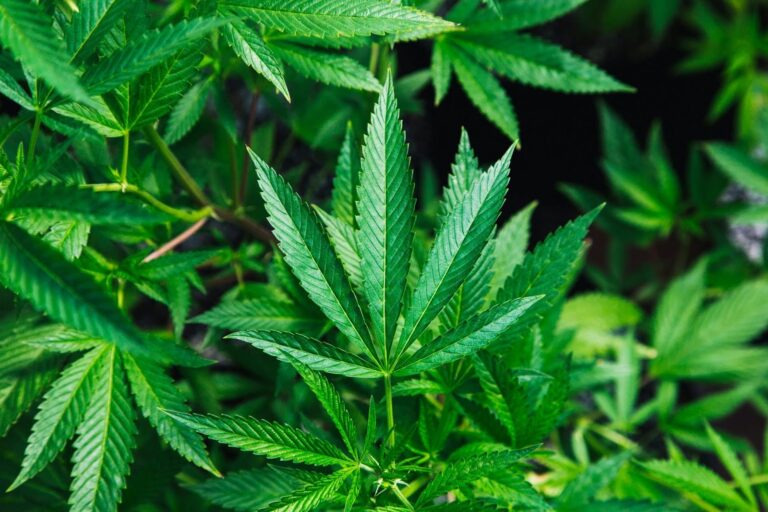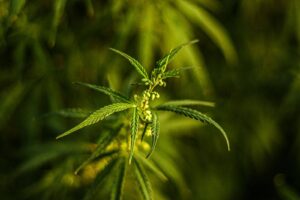Are you struggling to speed up your cannabis grow? You’ve got the seeds, the setup, maybe even a dedicated tent or grow space. You can already picture the thick, frosty buds, but then comes the wait. Days feel like weeks. Weeks feel like months. Time becomes your biggest enemy whether you’re growing to restock your stash, supply customers, or maximize your yields.
It gets worse when you’re doing everything rightwatering, feeding, watching the lights but still not seeing the kind of growth you want. It takes four to five months for each harvest, a slow process that preserves every ounce of potency and flavor. That’s not just frustrating. It’s inefficient.
So, how do you make weed grow fast without burning it out or ending up with fluffy, weak buds? How do you push your plants without stressing them out? That’s exactly what this guide is here for.
Let’s break down the tactics that work. There is no fluff, no recycled advice, just smart, proven ways to make your cannabis plant grow faster and better right now.
Importance of Faster Cannabis Growth
Faster growth isn’t just about impatience, it’s about optimizing your entire grow operation. The benefits go way beyond saving time.
- More Harvests Per Year: Shortening the growth cycle allows for multiple harvests annually (up to 4–5), increasing productivity and ensuring a steady supply of flowers.
- Lower Operating Costs: Faster plant maturation reduces lighting, water, and nutrients costs, increasing efficiency and making your grow more cost-effective.
- Better Use of Space: Quicker turnover maximizes your existing space, allowing for more output without expanding your grow area.
- Improved Terpene and Cannabinoid Profiles: Optimized faster growth can enhance terpene production, improving aroma, flavor, and potency, while making it easier to time harvests for peak quality.
- Competitive Advantage: Speed helps maintain a fresh product and gives you flexibility to adapt to market needs, experiment with different strains, and stay ahead in a competitive market.
- Faster Breeding and Pheno-Hunting: Rapid growth cycles enable quicker plant evaluation, allowing for faster genetic selection and refining of desired traits.
- Reduced Risk of Crop Failure: Shorter growth periods reduce exposure to pests, mold, and nutrient issues, decreasing the chances of crop failure.
Now, let us explore the steps that help you grow your cannabis plants faster.
Steps To Grow Cannabis Faster
Growing cannabis faster while ensuring high-quality yields is an achievable goal with the proper techniques and approach. Whether you’re a beginner or have some experience in the field, optimizing various aspects of growth can significantly shorten the time it takes for your plants to reach their full potential. Let us discover the key steps to accelerate your cannabis growth, from proper strain selection to environmental adjustments and nutrient management.
1. Genetic Selection for Speed
Not all cannabis strains grow at the same rate, and the right strain can make a huge difference in how quickly your plants mature. Here’s a comprehensive guide to help you grow faster, from choosing the right genetics to optimizing your environment.
- Choose Fast-Flowering Strains: Some strains mature more quickly than others. Varieties like Northern Lights, AK-47, and Critical Mass are known for their short flowering periods and strong potency. These are great if you aim for a quicker harvest without sacrificing quality.
- Consider Autoflowering Varieties: Autoflowers complete their entire life cycle in just 8 to 10 weeks and don’t depend on light cycles to flower. They’re ideal for rapid harvests and are especially beginner-friendly.
- Indica vs. Sativa: Indica strains grow faster and stay shorter than Sativas, with quicker flowering times. Indicas or autoflowers are generally the better choice if speed is your main goal.
- Use Selective Breeding: You can breed plants that naturally grow and mature faster. Over time, this can produce your own custom strain focused on speed. It takes effort, but the results can be worth it.
- Buy from Reputable Seed Banks: The quality of your seeds matters. Choose a trusted seed bank known for stable genetics and reliable, fast-growing strains. Good seeds make a noticeable difference.
- Harvest at the Right Time: Timing is key. Harvest when most trichomes are cloudy and about 10 to 20 percent have turned amber. This ensures the best balance between potency, flavor, and speed.
Tools like PlanaCan support this process with a clear visual timeline for planning and tracking cultivation tasks. You can schedule work months ahead while staying on top of daily activities. As harvest nears, the ability to adjust tasks helps keep up with changing needs. With all information centralized, everyone stays informed, and no step is missed.
2. Indoor Growing Techniques
By carefully managing light, temperature, humidity, nutrients, and other variables, you can accelerate the growth process and achieve high yields. Here’s how you can make your weed plants grow faster indoors:
Manipulate Light Cycles for Faster Growth: Light cycles are critical in controlling how quickly your cannabis plants grow.
- Seedling Stage: During the vegetative phase, start with 24 hours of light per day. This continuous exposure to light encourages rapid and aggressive growth.
- Vegetative to Flowering Transition: Once your plants reach a decent size, switch to a 12/12 light cycle (12 hours of light and 12 hours of darkness). This mimics natural light cycles and forces the plants to flower. By switching earlier than the natural trigger, you can shorten your growing timeline.
Utilize the Sea of Green (SOG) Technique: The Sea of Green (SOG) method effectively speeds up your harvest while maximizing space.
- Instead of growing fewer, larger plants, you grow many smaller plants.
- Each smaller plant flowers quickly and reaches harvest sooner than larger plants, allowing you to speed up your grow cycle overall.
Hydroponics or Aquaponics for Faster Growth: Consider using hydroponics or aquaponics systems to speed up growth. These soil-less growing methods allow for quicker nutrient uptake and faster growth.
- Hydroponics uses a water-based solution with essential nutrients, allowing for rapid and robust plant development.
- Aquaponics combines hydroponics with fish farming, where fish waste naturally fertilizes your plants, creating a sustainable and fast-growing environment.
Prune and Train Your Plants: Proper training and pruning can optimize plant growth by directing energy to the most productive areas.
- Pruning: Remove lower branches and leaves that aren’t receiving enough light. This ensures the plant focuses on the top, where growth is most productive.
- Training Techniques: Use methods like Low-Stress Training (LST), High-Stress Training (HST), topping, filming, and scragging to shape and expose more bud sites to light, resulting in faster, more uniform growth.
Supplement CO2 for Accelerated Growth: Increasing CO2 levels can significantly boost the rate of photosynthesis and overall plant growth. Elevating CO2 to around 1200-1500 ppm enhances plant growth, especially in high-light environments. However, ensure your system can handle the increased humidity and temperature levels that might accompany CO2 supplementation.
Use the Right Grow Lights: The type of grow light you use is critical in how fast your plants grow.
- LED Lights: Energy-efficient and adjustable, LEDs provide the perfect spectrum for both vegetative and flowering phases.
- HPS Lights: High-pressure sodium lights are ideal for the flowering phase. They provide a red spectrum that encourages bud formation.
- MH Lights: Metal Halide lights are great for the vegetative phase. They emit blue spectrum light, promoting strong, healthy growth.
Maintain Proper Air Circulation: Good air circulation ensures that your plants get the right amount of oxygen and helps regulate temperature and humidity.
- Use fans and exhaust systems to ensure fresh air flows through the grow room.
- Proper ventilation prevents the growth of mold, pests, and other issues while ensuring healthy plant development.
Monitor pH and Nutrient Levels Regularly: Maintaining proper pH and nutrient levels is critical for fast growth.
- For soil-grown plants, maintain a pH range of 6.0-7.0.
- In hydroponic systems, aim for a pH range of 5.5-6.5.
- Regularly check Electrical Conductivity (EC) to ensure plants get the right nutrients.
PlanaCan keeps your entire growth history in check: every choice, every outcome. Track harvests, generate in-depth reports, and keep your data tidy in one place. With clear insights and trend tracking, you’ll fine-tune your process, boost yield, and get better results faster.
Use Growth Stimulators and Beneficial Microorganisms: Growth stimulators and beneficial microorganisms can significantly improve plant health and growth speed.
- Root stimulators encourage quicker and stronger root development, allowing your plants to absorb nutrients more effectively.
- Beneficial microbes, such as mycorrhizal fungi and beneficial bacteria, enhance nutrient uptake and strengthen plant resilience, speeding up overall growth.
Optimize Temperature and Humidity: Control your room’s temperature and humidity for faster growth.
- Temperature: Cannabis plants grow best at 70-85°F (21-29°C) during the day and slightly cooler at night.
- Humidity: Keep humidity levels around 40-60% during the vegetative phase and reduce them to 40-50% during flowering to avoid mold and mildew.
3. Outdoor Growing Strategies
When it comes to outdoor growing, you don’t need a complex setup to see fast results—what you really need is the right strategy. Even though you’re working with the unpredictability of nature, with some clever techniques, you can control your timeline and maximize your yields.
Master the Power of Light Deprivation: Light deprivation helps you manipulate the natural light cycle, encouraging your plants to flower earlier.
- Cover your plants daily with tarps or opaque materials to block light.
- Ensure at least 12 hours of darkness each day to simulate the fall light cycle and trigger flowering.
Start Your Seedlings Indoors: Starting seeds indoors gives your plants a head start before transplanting them outdoors.
- Begin a few weeks before the last frost date to establish plants early.
- Gradually acclimate your plants to outdoor conditions by hardening them off over several days to prevent transplant shock.
Be Ready for Outdoor Variables: Outdoor growing involves factors beyond your control. Be prepared for common challenges.
- Watch for pests like insects and disease, using natural repellents or beneficial insects to keep them at bay.
- Guard against temperature fluctuations by covering plants during cold nights or using shade cloth to prevent heat stress.
- Prepare for unpredictable weather with protective covers, stakes, or structures to shield your plants.
Optimize Soil and Nutrients: Soil health directly impacts plant growth.
- Test your soil for pH and nutrient levels before planting to understand what amendments are needed.
- Amend the soil with compost, organic matter, or fertilizers to boost nutrient availability.
- Use slow-release fertilizers for a consistent nutrient supply over time, preventing nutrient imbalances.
Proper Spacing and Plant Training: How you space and train your plants can significantly impact their growth and yield.
- Space plants appropriately to avoid overcrowding, which can lead to competition for light, water, and nutrients.
- Train plants using techniques like topping or low-stress training (LST) to encourage lateral growth, which will result in more branches and higher yields.
Watering Smartly: Efficient watering is crucial for healthy, fast-growing plants.
- Water deeply but infrequently to encourage deep root growth and improve drought resistance.
- Use drip irrigation or soaker hoses to deliver water directly to the base of the plants, reducing water wastage and minimizing fungal risks.
- Monitor soil moisture and adjust watering based on weather conditions and soil dryness.
Protect Against Wind and Storms: Strong winds and storms can damage your outdoor plants.
- Use stakes or trellises to support plants as they grow taller and heavier.
- Create windbreaks by planting shrubs or building temporary barriers to protect your plants from wind damage.
Harvest at the Right Time: Timing your harvest correctly ensures the highest potency and quality.
- Monitor trichomes with a magnifying tool to determine the ideal harvest time, and look for a milky or amber color to indicate peak potency.
- Harvest in stages if you have multiple plants, starting with the ready ones and allowing others to mature longer.
To help with this, PlanaCan lets you define and automate each step of your growth with customizable templates. You can outline the full process from planting to harvest, then schedule tasks with just a few clicks to keep your workflow smooth and consistent.
Use Companion Planting: Companion planting helps promote plant health and reduces pests.
- Choose beneficial companions like marigolds or basil to deter pests and improve soil health.
- Enhance growth by planting nitrogen-fixing species or others that help with nutrient uptake.
Regularly Monitor and Inspect Plants: Routine checks are essential for maintaining healthy plants.
- Inspect your plants daily for signs of pests, disease, or nutrient deficiencies. Early detection can prevent significant damage.
- Keep records of plant health, weather conditions, and changes in your growing practices to track what works best.
4. Nutrition and Growing Medium
Without proper nutrition and care, your plants won’t grow as quickly or healthily as they should. Here’s a comprehensive guide to keep your cannabis plants thriving:
Nutrient Requirements at Different Stages: Cannabis plants have specific nutritional needs at each growth phase. Understanding these needs is crucial for healthy growth and maximizing yield.
- Vegetative Phase: During this stage, plants require a nitrogen-rich nutrient mix to promote healthy leaf and stem development. Nitrogen supports robust growth, ensuring a strong foundation for the plant.
- Flowering Phase: As plants transition to flowering, phosphorus and potassium become more critical. Phosphorus aids bud development, while potassium strengthens stems and overall plant health.
Supplementing with Micronutrients: While macronutrients like nitrogen, phosphorus, and potassium are essential, cannabis also requires micronutrients such as calcium, magnesium, sulfur, iron, zinc, copper, boron, and manganese. A deficiency in any of these can cause growth issues, like poor root development or yellowing leaves.
The Importance of the Growing Medium: The growing medium significantly impacts nutrient absorption. For faster uptake, coco coir and hydro-ready soils are ideal as they offer better aeration and moisture retention than heavier soil mixes.
- Coco Coir: Promotes healthy root growth with good aeration.
- Hydro-Ready Soils: Designed for hydroponic setups, allowing quicker nutrient absorption.
pH Levels Matter: Cannabis plants need proper pH levels to absorb nutrients. The ideal pH range is:
- Soil: 6.0-7.0
- Hydroponics: 5.5-6.5
Regular Nutrient Flushing: Excess nutrients can build up in the growing medium, leading to nutrient lockout. Flushing with plain water every few weeks helps remove excess salts, promoting healthier roots. Flushing is essential during the flowering phase to maintain nutrient absorption.
Temperature and Humidity Influence Nutrient Uptake: Environmental factors like temperature and humidity affect nutrient absorption. Keep your grow environment within these ranges:
- Temperature: 65°F-80°F (18°C-27°C)
- Humidity:
- Vegetative phase: 50-70%
- Flowering phase: 40-50%
Consider Organic Nutrients for Long-Term Health: While synthetic nutrients promote faster growth, organic fertilizers enrich the soil with beneficial microorganisms. Organic options like compost, worm castings, and organic liquid fertilizers offer slow-release feeding and promote a healthy ecosystem, leading to better long-term plant health and yields.
Monitoring for Nutrient Deficiencies and Toxicities: Even with the best feeding schedule, watch for signs of nutrient imbalances:
- Deficiency Signs: Yellowing leaves, poor growth, or leaf curling. For example, yellowing older leaves may indicate nitrogen deficiency.
- Toxicity Symptoms: Overfeeding can cause leaf discoloration, stunted growth, or burnt leaf tips. Adjust your feeding regimen if these signs appear.
With PlanaCan, you can simplify this by using customizable templates to define each cultivation step, from planting to harvest, based on strain or grow cycle. Once set, tasks can be scheduled with a few clicks, helping you stay consistent and quickly address issues like overfeeding.
Adjusting Nutrient Levels for Different Strains: Cannabis strains have unique nutrient needs. Some strains tolerate higher levels of nutrients, while others are more sensitive. Research your strain’s specific requirements to optimize growth and yield.
For example, sativa-dominant strains may need lighter feeding, while indica-dominant strains can handle higher nutrient levels.
5. Cloning and Propagation
The cloning process allows you to replicate a healthy cannabis plant with precision. Follow these structured steps to ensure strong, viable clones:
Select a Suitable Mother Plant: Choose a vigorous, pest-free photoperiod plant in the vegetative stage. Avoid stressed or flowering plants.
Focus on lower branches with at least two to three nodes (points where leaves and new shoots emerge), as these tend to root more successfully.
Take the Cutting: Using a sterile, sharp blade or scissors, cut the selected branch at a 45-degree angle just below a node.
Immediately remove the lower leaves and trim any large fan leaves to minimize moisture loss and reduce stress on the cutting.
Apply Rooting Hormone (Optional): Dip the freshly cut end of the stem into a rooting hormone, which is available in gel, liquid, or powder form.
While optional, this step significantly improves root development and increases the success rate of your clones.
Place the Cutting in a Rooting Medium: Insert the treated cutting into a moist rooting medium such as Rockwool cubes, peat plugs, or other starter substrates.
Ensure the cutting is inserted deep enough to remain upright and is in firm contact with the medium for support and moisture uptake.
Maintain Ideal Environmental Conditions: Successful rooting depends on maintaining a stable, controlled environment.
- Provide low-intensity light using T5 fluorescent tubes or LED grow lights.
- Keep humidity levels between 70–80%, ideally with the help of a humidity dome or plastic covering.
- Maintain a temperature range of 70–78°F (21–25°C).
- Mist the leaves lightly once or twice daily to keep them hydrated, but avoid overwatering the growing medium.
Monitor Root Development: Roots typically begin forming within 7 to 14 days, depending on environmental conditions and plant health.
Once you observe visible roots measuring at least 1–2 inches in length, your clone is ready to be transplanted into soil or a hydroponic system.
6. Hydroponic Growing Systems
There are several hydroponic systems to choose from, each with its own benefits. Let’s explore some of the most popular options to help you decide which one works best for your grow.
- Deep Water Culture (DWC): Deep Water Culture (DWC) is one of the simplest yet most effective hydroponic systems for growing cannabis. In a DWC system, plants are suspended with their roots submerged in a nutrient-rich solution that is oxygenated by an air pump. This constant access to both nutrients and oxygen allows the roots to grow quickly and efficiently.
- Benefits: The continuous nutrient solution promotes rapid growth, while the constant oxygenation of the roots supports faster root development. With DWC, you can expect quicker harvests due to the increased plant growth rate.
- Ideal For: DWC is an excellent choice if you’re looking for a low-maintenance system that provides fast results, especially in smaller grows where space is limited.
- Ebb and Flow System: The Ebb and Flow system, also known as Flood and Drain, periodically floods the plant roots with a nutrient solution before draining it back into a reservoir. This system provides plants with both nutrients and oxygen in a cycle, ensuring that they receive fresh nutrients while also being exposed to dry periods for root oxygenation.
- Benefits: The ebb and flow cycle creates a dynamic environment that promotes healthy root growth, encourages vigorous plant development, and reduces harvest time.
- Ideal For: This system is flexible and can be adjusted to suit different growth stages. It’s perfect for larger-scale grows and offers excellent control over nutrient delivery, making it a great option if you want to fine-tune your growing conditions.
- Nutrient Film Technique (NFT): In the Nutrient Film Technique (NFT), a thin film of nutrient-rich water continuously flows over the roots, allowing them to absorb nutrients and oxygen as the water moves past them. This steady flow ensures that the roots are constantly nourished without becoming saturated, which prevents root rot and promotes healthy growth.
- Benefits: NFT systems provide excellent oxygenation to the roots and maintain a consistent nutrient supply. The continuous movement of water ensures that plants are always in optimal growing conditions, speeding up growth and improving overall health.
- Ideal For: NFT is a space-efficient system that works well in smaller grow spaces. It’s especially useful for growers who want to optimize nutrient flow while minimizing water usage.
- Aeroponics: Aeroponics is an advanced hydroponic system where the plant roots are suspended in the air and misted with a nutrient solution. This system provides the maximum amount of oxygen to the roots, which leads to explosive growth and rapid development.
- Benefits: Aeroponics promotes faster root development and healthier plants by allowing the roots to get the maximum amount of oxygen. The misting system delivers nutrients efficiently, leading to higher yields in less time.
- Ideal For: Aeroponics is a great option for experienced growers who want to push the boundaries of growth speed. It’s particularly effective in controlled environments and is well-suited for high-efficiency, high-yield cultivation.
- Wick System: The Wick system is one of the simplest hydroponic systems. In this system, a wick (usually made from cotton or nylon) draws nutrient solution up to the plant roots. There are no pumps or air stones involved, making this a very low-maintenance option.
- Benefits: The Wick system is simple to set up and requires very little attention once it’s running. It’s ideal for smaller grows where space and budget are limited.
- Ideal For: If you’re just starting out with hydroponics or only have a small grow space, the Wick system provides a hassle-free way to grow cannabis with minimal investment.
Conclusion
So, how do you make weed grow faster? It all begins with smart strain selection, and it gains momentum with optimized lighting, nutrient precision, and advanced methods like cloning and hydroponics. Every decision you make, from the growing medium to your light schedule, either speeds up or slows down your growth.
Beyond techniques, real success comes from efficiently managing the process. That’s where PlanaCan comes in.
PlanaCan simplifies your workflow by letting you define and automate every step of the cultivation process. You can create templates tailored to specific strains or grow cycles, and then schedule tasks with just a few clicks. It keeps your growth organized, repeatable, and easy to manage.
It also gives you a clear visual timeline to plan ahead and stay on top of daily tasks. You can easily adjust ongoing activities as needed and ensure everyone on your team knows what needs to be done. There will be no missed steps, no confusion, just a well-run growth.
Pair your cultivation skills with powerful tools like PlanaCan to grow faster and harvest smarter.
Schedule a free call today and discover how PlanaCan can help you grow better, consistently.




